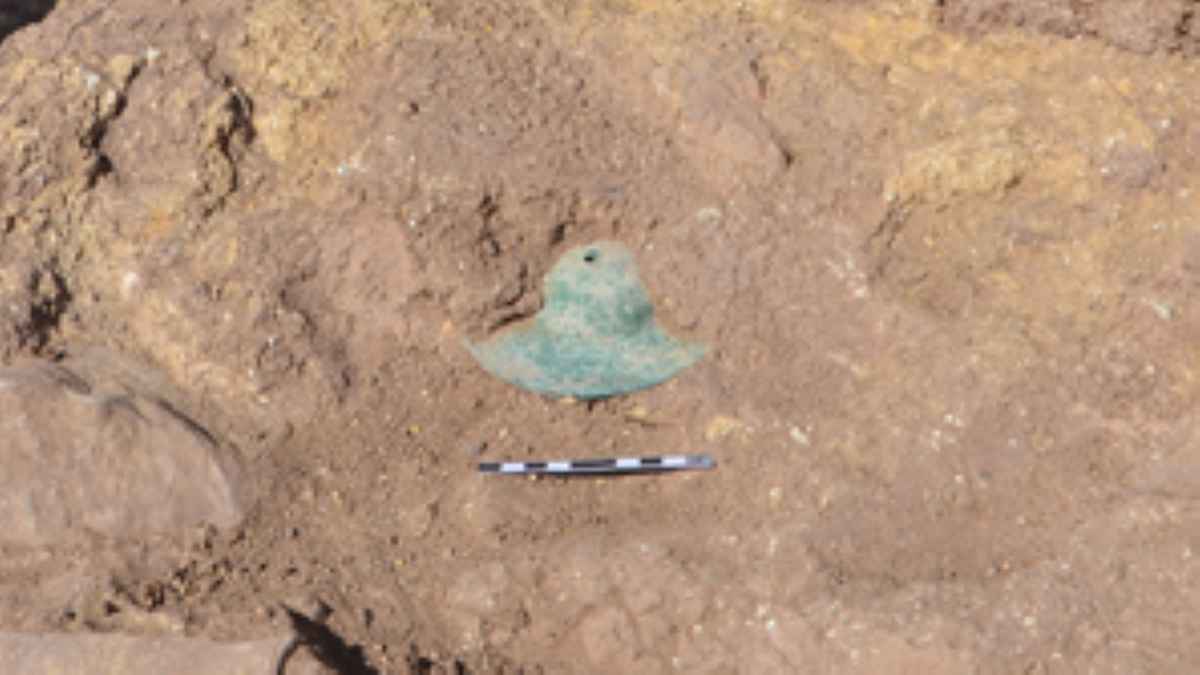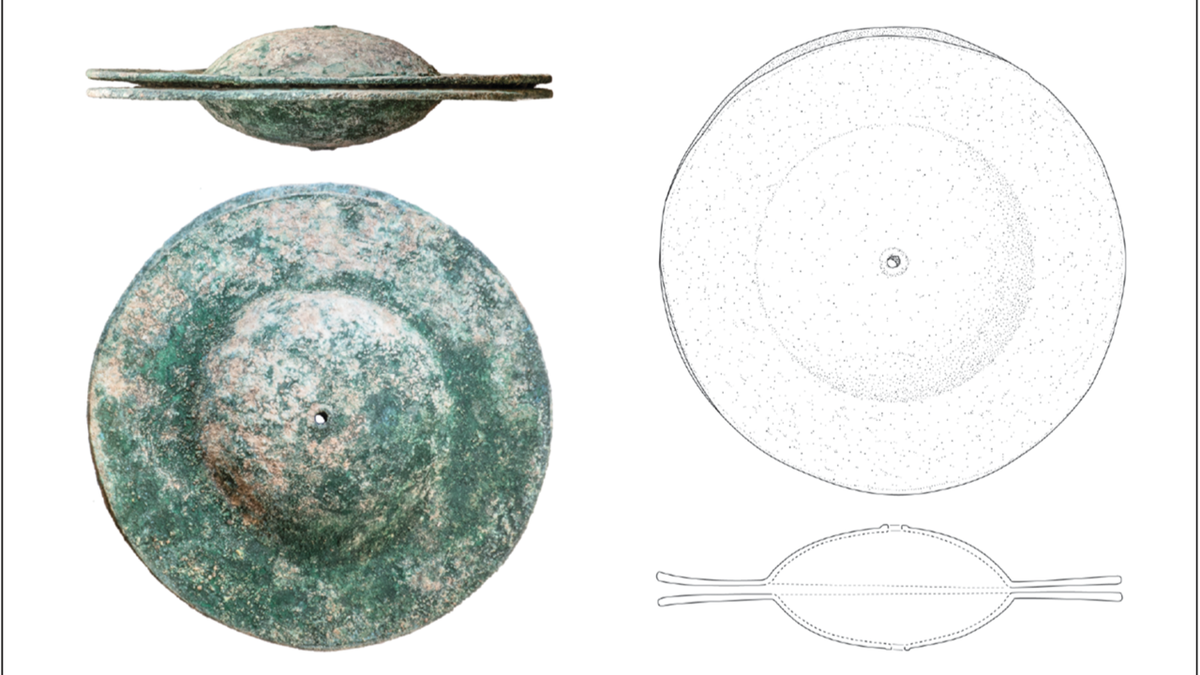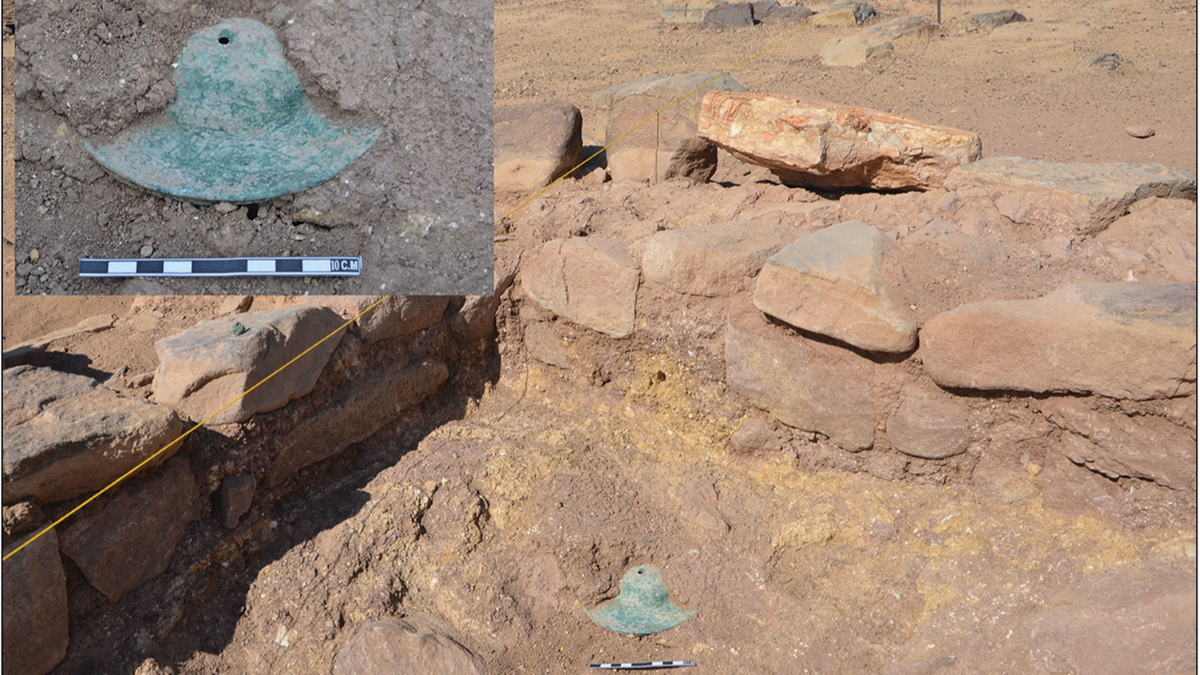Archaeologists in Egypt have discovered Pharaoh’s tomb
Dr. Joseph Wagner, Pen Museum Curator, located in Philadelphia recently discovered a groundbreaking: an unknown Pharaoh’s tomb, 3,600 years ago. (Credit: Joseph Wagner for Penn Museum)
Archaeologists were surprised by a strange pair found in Oman-keble to discover these items it was actually 4,000 years old materials.
The symbols were discovered on a modern-day Dahwa site in Oman, located on the south-east end of the Arabian Peninsia, southwestern Asia.
Scientists have published their search in an article titled “Sindhica Traditions Tihay of Oman from Dahawa to Bronze Edge Symbols” in the journal Journal on April 8.
The ancient settlement reveals the remains of 1,800 -year -old dog, astonished experts: ‘quite well reserved’
According to the article, Histor Tihasiks exposed the symbols during the excavation of an ancient building in 2018. Symbols return somewhere between 2200 to 2000 BC
Pictures look as uniform in size. Both do not seem to be the loss of surface, which the authors of the study said “Support[ed] The idea of a deliberate and cautious resort. “
Archaeologists found the ancient symbols of Oman. The excavations were recently published. (Estock; by Y al -Rahbi Purana/Cambridge.org)
“Both are round, the outer diameter of 138 mm and an embedded middle (17 mm deep and 76 mm in diameter), which is poured by a hole in the diameter of 4.2 mm,” the journal article says.
“The walls of the symbols are thin, with a thickness of 1.5-22 mm that it reaches 3 mm somewhat on the edges” “”
Archaeologists discovered the long-haired tomb of unknown Pharaoh in Egypt
Although well preserved, the symbols also felt some degradation on the millennium.
The green surface of the symbols suggests copper corrosion and archaeologists have noted that they are “garbage together”.
The survey said, “Symbols are garbage together due to the millennium of burial on the ground,” the survey said. “When trying to separate this pair, two small pieces are separated from one side; one of these was submitted for chemical analysis using X-ray fluorosens.”

Symbols can be used in ancient practices. (Antiquity/Cambridge.org)
Writers also added that common sense about ancient musical instruments causes interruption by “conservation of vulnerable materials and relative rarity of durable examples”.
The only ancient musical instruments still survive are made of metallic or bone.
“These symbols are the first type of them that has been found in the best archaeological context.”
The survey said, “Copper-aloya Symbols are one of the relatively rare musical instruments rescued from the context of the nearby Bronze Age,” the survey said.
“These Persuitive instruments are found in the Mesopotamia and the Indus Valley from the very beginning of the third millennium BC, the Levantine examples were published from the second millennium BC.”

An image shows copper oxidation on the surface of the symbol. (Antiquity/Cambridge.org)
However, the slightest degradation of the patterns did not prevent experts’ excitement. Talking to Archeology Magazine, the author of the study describes Khaled Douglas Symbols as unique.
“These symbols are their first type in which Oman’s good archaeological context has been found in the context of a special initial context to question something that is questioned [about] Their sources and development, “archaeologists say.
Click here to sign up for our lifestyle newsletter
Hist Tihasiks believe that such symbols were used during the construction of the temple.
However, the study warned that not much information is available at the moment.

Symbols are about 4,000 years old, though they can return early 4,200 years. (Wi al -al -Rahbi via antique/cambridge.org)
The survey says, “Symbols are consistently involved in the conduct of the conduct of the east,” the survey states in the survey.
“[P]After completing the study, it is estimated that the Dahwa Symbols represent the same connection between culture, music and dance. “
For further lifestyle articles, see FoxNews.com/Lifestyle
Archaeologists are planning to continue studying patterns to determine how the social context was used.
Finishing the journal Article, “From their beginning, the symbols were tied to the activities of the conduct and the temple settings, and the dahwa suggested the invention of the pair that music and musical instruments were important cultural elements of inter-regional communication and cooperation around the Arab Gulf,” the journal article finished.
Click here to get Fox News app
“The possible multi -faceted role of music in the social and conduct of the Bronze Age community remains a question for future research.”
Leave a Reply